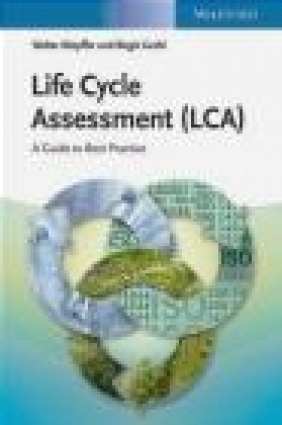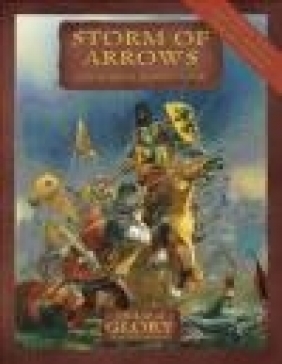Life Cycle Assessment (LCA)
Walter Klopffer, Birgit Grahl
Life Cycle Assessment (LCA)
Walter Klopffer, Birgit Grahl
- Producent: VCH
- Rok produkcji: 2014
- ISBN: 9783527329861
- Ilość stron: 440
- Oprawa: Twarda
Niedostępna
Opis: Life Cycle Assessment (LCA) - Walter Klopffer, Birgit Grahl
This first hands-on guide to ISO-compliant LCA makes this powerful tool immediately accessible to both small and large companies. Following a general introduction on the philosophy and purpose of LCA, this practical volume takes readers through all the stages of a complete LCA analysis, with each step exemplified by real-life data from a major LCA project on beverage packaging. Special sections cover such globally important sustainability measures as carbon and water footprints, based on the most recent international standards and definitions. Written by one of the pioneers of LCA, this book is targeted at first-time LCA users but equally makes a much-valued reference for more experienced practitioners.Preface XI 1 Introduction 1 1.1 What Is Life Cycle Assessment (LCA)? 1 1.1.1 Definition and Limitations 1 1.1.2 Life Cycle of a Product 2 1.1.3 Functional Unit 3 1.1.4 LCA as System Analysis 4 1.1.5 LCA and Operational Input--Output Analysis (Gate-to-Gate) 5 1.2 History 6 1.2.1 Early LCAs 6 1.2.2 Environmental Policy Background 7 1.2.3 Energy Analysis 8 1.2.4 The 1980s 8 1.2.5 The Role of SETAC 9 1.3 The Structure of LCA 10 1.3.1 Structure According to SETAC 10 1.3.2 Structure of LCA According to ISO 11 1.3.3 Valuation -- a Separate Phase? 12 1.4 Standardisation of LCA 14 1.4.1 Process of Formation 14 1.4.2 Status Quo 16 1.5 Literature and Information on LCA 17 References 18 2 Goal and Scope Definition 27 2.1 Goal Definition 27 2.2 Scope 28 2.2.1 Product System 28 2.2.2 Technical System Boundary 29 2.2.2.1 Cut-Off Criteria 29 2.2.2.2 Demarcation towards System Surrounding 32 2.2.3 Geographical System Boundary 34 2.2.4 Temporal System Boundary/Time Horizon 35 2.2.5 The Functional Unit 37 2.2.5.1 Definition of a Suitable Functional Unit and a Reference Flow 37 2.2.5.2 Impairment Factors on Comparison -- Negligible Added Value 40 2.2.5.3 Procedure for Non-negligible Added Value 41 2.2.6 Data Availability and Depth of Study 43 2.2.7 Further Definitions 44 2.2.7.1 Type of Impact Assessment 44 2.2.7.2 Valuation (Weighting), Assumptions and Notions of Value 45 2.2.7.3 Critical Review 46 2.2.8 Further Definitions to the Scope 47 2.3 Illustration of the Component 'Definition of Goal and Scope' Using an Example of Practice 47 2.3.1 Goal Definition 48 2.3.2 Scope 50 2.3.2.1 Product Systems 50 2.3.2.2 Technical System Boundaries and Cut-Off Criteria 53 2.3.2.3 Demarcation to the System Surrounding 53 2.3.2.4 Geographical System Boundary 54 2.3.2.5 Temporal System Boundary 55 2.3.2.6 Functional Unit and Reference Flow 55 2.3.2.7 Data Availability and Depth of Study 55 2.3.2.8 Type of Life Cycle Impact Assessment 56 2.3.2.9 Methods of Interpretation 57 2.3.2.10 Critical Review 57 References 57 3 Life Cycle Inventory Analysis 63 3.1 Basics 63 3.1.1 Scientific Principles 63 3.1.2 Literature on Fundamentals of the Inventory Analysis 64 3.1.3 The Unit Process as the Smallest Cell of LCI 65 3.1.3.1 Integration into the System Flow Chart 65 3.1.3.2 Balancing 67 3.1.4 Flow Charts 69 3.1.5 Reference Values 72 3.2 Energy Analysis 74 3.2.1 Introduction 74 3.2.2 Cumulative Energy Demand (CED) 77 3.2.2.1 Definition 77 3.2.2.2 Partial Amounts 77 3.2.2.3 Balancing Boundaries 79 3.2.3 Energy Content of Inflammable Materials 81 3.2.3.1 Fossil Fuels 81 3.2.3.2 Quantification 81 3.2.3.3 Infrastructure 84 3.2.4 Supply of Electricity 85 3.2.5 Transports 88 3.3 Allocation 92 3.3.1 Fundamentals of Allocation 92 3.3.2 Allocation by the Example of Co-production 92 3.3.2.1 Definition of Co-production 92 3.3.2.2 'Fair' Allocation? 93 3.3.2.3 Proposed Solutions 98 3.3.2.4 Further Approaches to the Allocation of Co-products 101 3.3.2.5 System Expansion 102 3.3.3 Allocation and Recycling in Closed-Loops and Re-use 105 3.3.4 Allocation and Recycling for Open-Loop Recycling (COLR) 107 3.3.4.1 Definition of the Problem 107 3.3.4.2 Allocation per Equal Parts 109 3.3.4.3 Cut-off Rule 111 3.3.4.4 Overall Load to System B 113 3.3.5 Allocation within Waste-LCAs 113 3.3.5.1 Modelling of Waste Disposal of a Product 114 3.3.5.2 Comparison of Different Options of Waste Disposal 116 3.3.6 Summary on Allocation 117 3.4 Procurement, Origin and Quality of Data 118 3.4.1 Refining the System Flow Chart and Preparing Data Procurement 118 3.4.2 Procurement of Specific Data 119 3.4.3 Generic Data and Partial LCIs 127 3.4.3.1 Which Data are 'Generic'? 127 3.4.3.2 Reports, Publications, Web Sites 129 3.4.3.3 Purchasable Data Bases and Software Systems 131 3.4.4 Estimations 132 3.4.5 Data Quality and Documentation 133 3.5 Data Aggregation and Units 134 3.6 Presentation of Inventory Results 136 3.7 Illustration of the Inventory Phase by an Example 137 3.7.1 Differentiated Description of the Examined Product Systems 138 3.7.1.1 Materials in the Product System 138 3.7.1.2 Mass Flows of the Product after Use Phase 140 3.7.1.3 Handling of Sorting Residues and Mixed Plastics Fraction 142 3.7.1.4 Recovery of Transport Packaging 143 3.7.2 Analysis of Production, Recovery Technologies and Other Relevant Processes of the Production System 143 3.7.2.1 Production Procedures of the Materials 143 3.7.2.2 Production by Materials 146 3.7.2.3 Distribution 148 3.7.2.4 Collection and Sorting of Used Packaging 148 3.7.2.5 Recovery Technologies (Recycling) 149 3.7.2.6 Recycling of Transport Packagings 151 3.7.2.7 Transportation by Truck 152 3.7.2.8 Electricity Supply 152 3.7.3 Elaboration of a Differentiated System Flow Chart with Reference Flows 153 3.7.4 Allocation 153 3.7.4.1 Definition of Allocation Rules on Process Level 153 3.7.4.2 Definition of Allocation Rules on System Level for Open-Loop Recycling 157 3.7.5 Modelling of the System 157 3.7.6 Calculation of the Life Cycle Inventory 158 3.7.6.1 Input 159 3.7.6.2 Output 165 References 170 4 Life Cycle Impact Assessment 181 4.1 Basic Principle of Life Cycle Impact Assessment 181 4.2 Method of Critical Volumes 183 4.2.1 Interpretation 184 4.2.2 Criticism 185 4.3 Structure of Impact Assessment according to ISO 14040 and 14044 187 4.3.1 Mandatory and Optional Elements 187 4.3.2 Mandatory Elements 187 4.3.2.1 Selection of Impact Categories -- Indicators and Characterisation Factors 187 4.3.2.2 Classification 190 4.3.2.3 Characterisation 191 4.3.3 Optional Elements of LCIA 192 4.3.3.1 Normalisation 192 4.3.3.2 Grouping 197 4.3.3.3 Weighting 200 4.3.3.4 Additional Analysis of Data Quality 201 4.4 Method of Impact Categories (Environmental Problem Fields) 201 4.4.1 Introduction 201 4.4.2 First ('Historical') Lists of the Environmental Problem Fields 202 4.4.3 Stressor-Effect Relationships and Indicators 206 4.4.3.1 Hierarchy of Impacts 207 4.4.3.2 Potential versus Actual Impacts 209 4.5 Impact Categories, Impact Indicators and Characterisation Factors 212 4.5.1 Input-Related Impact Categories 212 4.5.1.1 Overview 212 4.5.1.2 Consumption of Abiotic Resources 214 4.5.1.3 Cumulative Energy and Exergy Demand 220 4.5.1.4 Consumption of Biotic Resources 222 4.5.1.5 Use of (Fresh) Water 224 4.5.1.6 Land Use 227 4.5.2 Output-Based Impact Categories (Global and Regional Impacts) 233 4.5.2.1 Overview 233 4.5.2.2 Climate Change 234 4.5.2.3 Stratospheric Ozone Depletion 240 4.5.2.4 Formation of Photo Oxidants (Summer Smog) 246 4.5.2.5 Acidification 254 4.5.2.6 Eutrophication 261 4.5.3 Toxicity-Related Impact Categories 268 4.5.3.1 Introduction 268 4.5.3.2 Human Toxicity 269 4.5.3.3 Ecotoxicity 279 4.5.3.4 Concluding Remark on the Toxicity Categories 285 4.5.4 Nuisances by Chemical and Physical Emissions 286 4.5.4.1 Introduction 286 4.5.4.2 Smell 286 4.5.4.3 Noise 287 4.5.5 Accidents and Radioactivity 289 4.5.5.1 Casualties 289 4.5.5.2 Radioactivity 290 4.6 Illustration of the Phase Impact Assessment by Practical Example 291 4.6.1 Selection of Impact Categories -- Indicators and Characterisation Factors 293 4.6.1.1 (Greenhouse) Global Warming Potential 294 4.6.1.2 Photo-Oxidant Formation (Photo Smog or Summer Smog Potential) 295 4.6.1.3 Eutrophication Potential 296 4.6.1.4 Acidification Potential 297 4.6.1.5 Resource Demand 298 4.6.2 Classification 300 4.6.3 Characterisation 300 4.6.4 Normalisation 305 4.6.5 Grouping 310 4.6.6 Weighting 311 References 311 5 Life Cycle Interpretation, Reporting and Critical Review 329 5.1 Development and Rank of the Interpretation Phase 329 5.2 The Phase Interpretation According to ISO 331 5.2.1 Interpretation in ISO 14040 331 5.2.2 Interpretation in ISO 14044 331 5.2.3 Identification of Significant Issues 332 5.2.4 Evaluation 333 5.3 Techniques for Result Analysis 334 5.3.1 Scientific Background 334 5.3.2 Mathematical Methods 335 5.3.3 Non-numerical Methods 338 5.4 Reporting 338 5.5 Critical Review 340 5.5.1 Outlook 342 5.6 Illustration of the Component Interpretation Using an Example of Practice 343 5.6.1 Comparison Based on Impact Indicator Results 343 5.6.2 Comparison Based on Normalisation Results 344 5.6.3 Sectoral Analysis 344 5.6.4 Completeness, Consistency and Data Quality 346 5.6.5 Significance of Differences 347 5.6.6 Sensitivity Analyses 348 5.6.7 Restrictions 350 5.6.8 Conclusions and Recommendations 351 5.6.9 Critical Review 351 References 352 6 From LCA to Sustainability Assessment 357 6.1 Sustainability 357 6.2 The Three Dimensions of Sustainability 358 6.3 State of the Art of Methods 361 6.3.1 Life Cycle Assessment -- LCA 361 6.3.2 Life Cycle Costing -- LCC 364 6.3.3 Product-Related Social Life Cycle Assessment -- SLCA 366 6.4 One Life Cycle Assessment or Three? 368 6.4.1 Option 1 368 6.4.2 Option 2 369 6.5 Conclusions 370 References 371 Appendix A Solution of Exercises 375 Appendix B Standard Report Sheet of Electricity Mix Germany (UBA 2000, Materials p. 179ff) Historic example, only for illustrative purposes 381 Acronyms/Abbreviations 385 Index 391
Szczegóły: Life Cycle Assessment (LCA) - Walter Klopffer, Birgit Grahl
Tytuł: Life Cycle Assessment (LCA)
Autor: Walter Klopffer, Birgit Grahl
Producent: VCH
ISBN: 9783527329861
Rok produkcji: 2014
Ilość stron: 440
Oprawa: Twarda
Waga: 0.92 kg






























